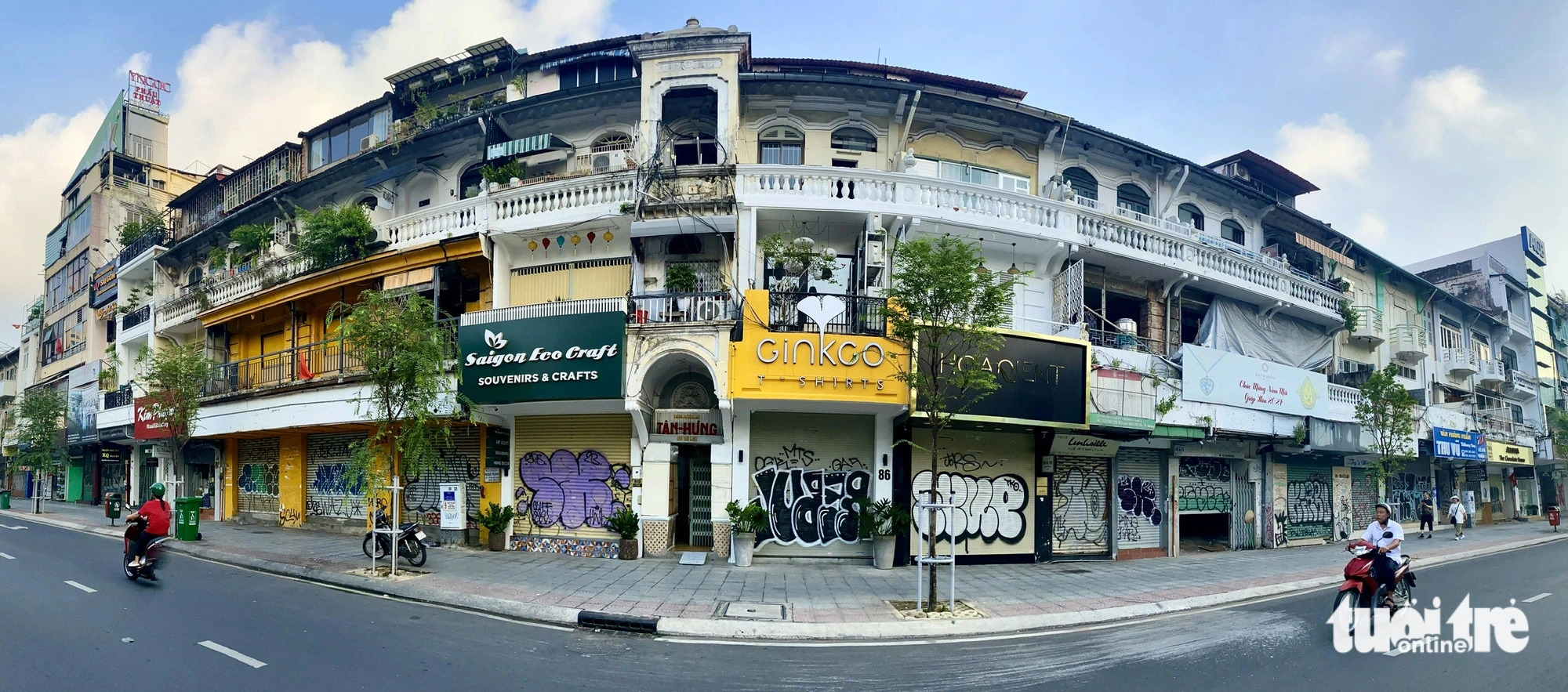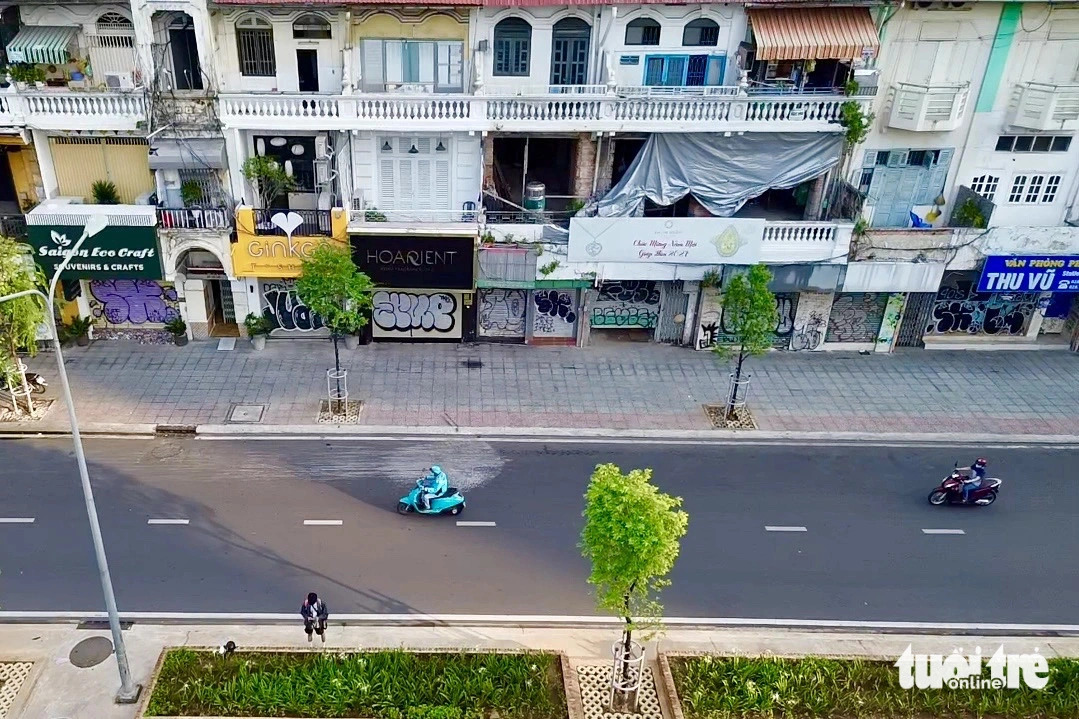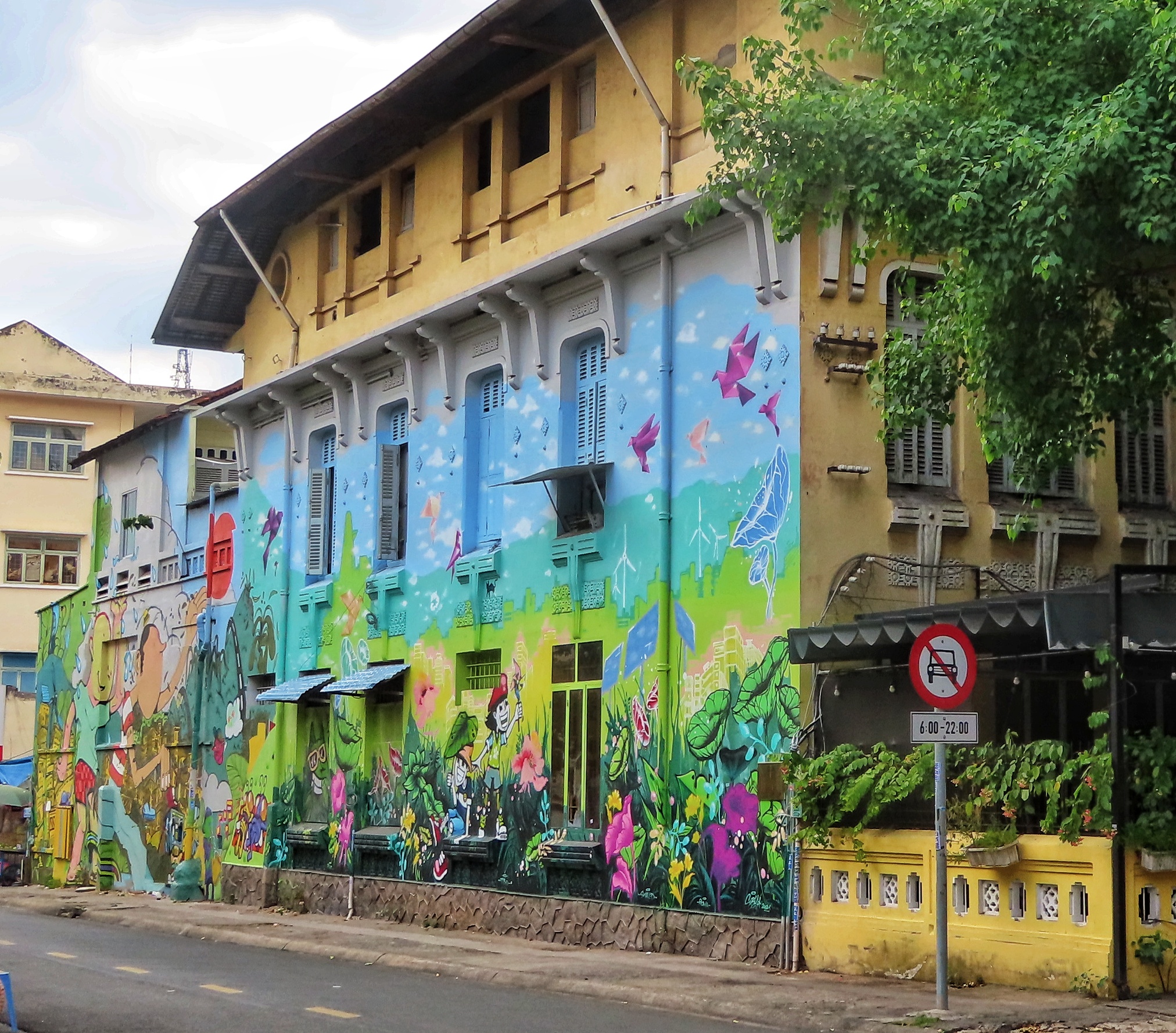Many believe these vandals should face consequences for their actions, including fines and mandatory clean-up of the mess they’ve created. It’s essential to hold them accountable for their disrespectful behavior.
“This act of vandalism is unacceptable,” expressed American Marcia Ring, sharing her perspective with Tuoi Tre News.
Ring’s sentiment resonates strongly with those who feel that visitors should respect their host country. She continues, “It’s appalling that people would come to a new country and engage in such destructive behavior.”
In her opinion, there should be repercussions for their actions: “These individuals should be fined, or if necessary, deported from the country to send a clear message.”
Ring highlights a crucial distinction, noting that in her home country, there are age restrictions on the purchase of spray paint, and minors caught engaging in graffiti typically face fines. She believes that a similar approach could be effective in Vietnam.
Additionally, Ring suggests implementing programs that channel graffiti artists’ creativity into more positive outlets. She shares, “In the States, there are successful initiatives where designated spaces are provided for graffiti artists to practice their art, and they are also invited to create public murals, which discourages other artists from defacing those areas out of respect.”
Ring, a resident of Vung Tau City in southern Vietnam, often encounters graffiti in her daily life. While she acknowledges that some of it showcases wit and offers insight into young people’s perspectives, she draws a clear line when it comes to respecting private property.
Graffiti vandalism has been a persistent issue in Vietnamese cities. In Ho Chi Minh City, for example, dozens of houses, shops, and walls along Le Loi Boulevard in District 1 have fallen victim to graffiti, frustrating property owners and detracting from the area’s aesthetic appeal.
|
|
| Dozens of houses, shops, and walls along Le Loi Boulevard in District 1, Ho Chi Minh City, are covered in graffiti. The vandalism has caused annoyance for residents and business owners alike. Photo: Tien Quoc / Tuoi Tre |
Joss Huot, a graphic artist and French-Canadian expatriate, shares his mixed feelings about graffiti art. He believes that graffiti should convey a meaningful message or express an opinion rather than merely serving as a gang logo or an incomprehensible tag.
Huot has witnessed the increasing prevalence of graffiti in Ho Chi Minh City over the years, noticing it on walls, roll-up doors, and bridges throughout the city. He remarks, “You can now find graffiti in every district, and it’s becoming harder to escape its presence.”
|
|
| More than 50 houses with roll-up doors along Le Loi Boulevard in District 1 have been vandalized with graffiti. The once-clean surfaces are now covered in a mess of colors and shapes. Photo: Tien Quoc / Tuoi Tre |
According to Huot, while Vietnam is experiencing a surge in graffiti, it has been a long-standing phenomenon in many other countries. He shares his perspective on the recent incident involving foreigners caught doing graffiti, suggesting, “They should be sent back to their countries of origin, but not before facing consequences like paying a fine or cleaning up their ‘masterpiece.'”
Huot acknowledges that his viewpoint may be perceived as harsh by some, but he firmly believes that respect is the underlying value at stake. He shares insights from his home country, Canada, where caught graffiti offenders are typically fined.
“It’s a shame that these ‘artists’ don’t channel their talent into creating something of genuine artistic value,” Huot laments. “Because, without a doubt, some of these individuals possess remarkable artistic skills.”
|
|
| A stunning mural captured by Joss Huot in District 1, Ho Chi Minh City. This form of street art adds beauty and character to the urban landscape. Photo: Joss Huot |
Graffiti rampant across Ho Chi Minh City
Within weeks of their purchase, the new railcars purchased for Ho Chi Minh City’s Metro Line No. 1 had already been completely blanketed in graffiti, though it is hardly surprising given just how widespread graffiti culture has become in the city, with tags covering thousands of walls, buildings, bus stops, vehicles, and even the newly opened Thu Thiem 2 Bridge.









